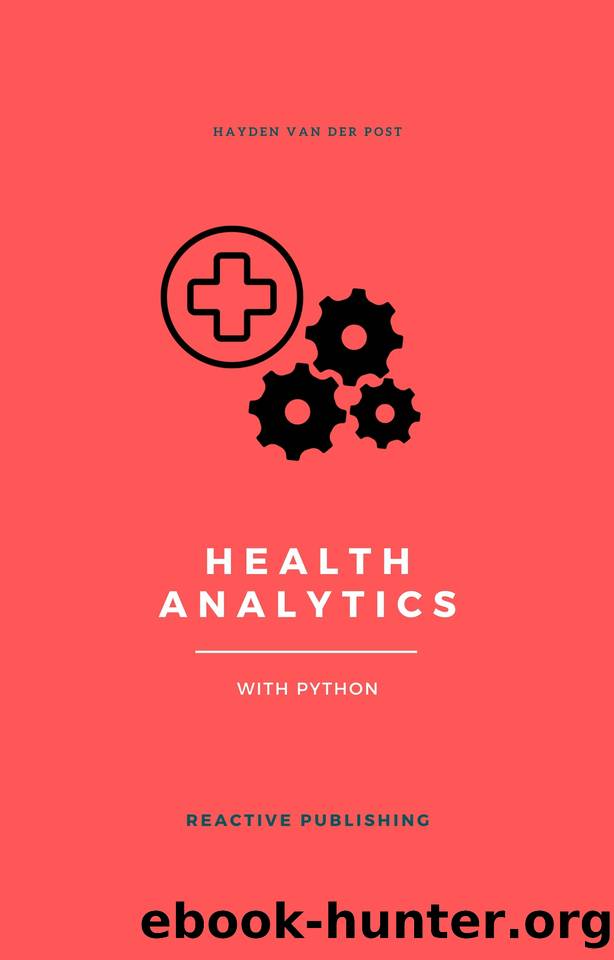Health Analytics with Python: A Comprehensive Guide for 2024 by Van Der Post Hayden

Author:Van Der Post, Hayden
Language: eng
Format: epub
Publisher: Reactive Publishing
Published: 2024-01-15T00:00:00+00:00
Privacy and Security in Health Data Science
In the domain of health data science, privacy and security are not mere considerationsâthey are imperatives.
Amidst the complex web of healthcare delivery, data scientists are tasked with constructing secure systems that protect sensitive information while facilitating its use for the greater good. In this dance of data management, Python emerges as a partner of unparalleled agility. Its libraries and frameworks, such as PyNaCl for encryption and PyJWT for token-based authentication, offer robust solutions for securing data in transit and at rest.
Let's explore a practical implementation. Consider a health application that manages electronic health records (EHR). The security of these records is paramount. Python's SQLAlchemy ORM, combined with the Flask framework, can help build a secure API that upholds the principles of minimum necessary access and ensures that only authenticated users can access data. Here's a simplified example:
```python
from flask import Flask, request
from flask_sqlalchemy import SQLAlchemy
from sqlalchemy import Column, Integer, String
from flask_jwt_extended import (
JWTManager, jwt_required, create_access_token,
get_jwt_identity
)
app = Flask(__name__)
app.config['SQLALCHEMY_DATABASE_URI'] = 'postgresql://user:password@localhost/ehrdb'
app.config['JWT_SECRET_KEY'] = 'super-secret' # Change this!
db = SQLAlchemy(app)
jwt = JWTManager(app)
class User(db.Model):
id = Column(Integer, primary_key=True)
username = Column(String(80), unique=True, nullable=False)
password_hash = Column(String(120), nullable=False)
class PatientRecord(db.Model):
id = Column(Integer, primary_key=True)
patient_id = Column(Integer, nullable=False)
record_data = Column(String, nullable=False)
# Additional fields and methods for record encryption/decryption
@app.route('/login', methods=['POST'])
def login():
username = request.json.get('username', None)
password = request.json.get('password', None)
user = User.query.filter_by(username=username).first()
# Here, verify password and handle authentication
access_token = create_access_token(identity=username)
return {'access_token': access_token}
@app.route('/record/<int:patient_id>', methods=['GET'])
@jwt_required()
def get_record(patient_id):
current_user = get_jwt_identity()
# Verify the current user has rights to access the patient's record
record = PatientRecord.query.filter_by(patient_id=patient_id).first()
# Record decryption and data preparation would occur here
return {'record_data': record.record_data}
if __name__ == '__main__':
app.run()
```
This code illustrates the foundation of a secure health data system using Python. It implements user authentication with JWT tokens and provides a protected route to access patient records. Additional layers such as HTTPS, advanced user role management, and comprehensive logging would further enhance the system's security.
Beyond technical measures, privacy and security in health data science are also about adherence to legal frameworks such as HIPAA, GDPR, and other regional regulations. Python's versatility extends to compliance automation, where scripts can help in the generation of audit trails, anomaly detection, and compliance reporting, ensuring that organizations can stay abreast of the ever-evolving legislative landscape.
Privacy and security are the twin guardians of trust in health data science. By upholding these principles through meticulous design and rigorous practice, Python serves as a steadfast ally in the quest to harness data's potential without compromising the sacrosanctity of patient confidentiality.
Download
This site does not store any files on its server. We only index and link to content provided by other sites. Please contact the content providers to delete copyright contents if any and email us, we'll remove relevant links or contents immediately.
The Mikado Method by Ola Ellnestam Daniel Brolund(20603)
Hello! Python by Anthony Briggs(19899)
Secrets of the JavaScript Ninja by John Resig Bear Bibeault(18208)
Dependency Injection in .NET by Mark Seemann(18108)
The Well-Grounded Java Developer by Benjamin J. Evans Martijn Verburg(17575)
OCA Java SE 8 Programmer I Certification Guide by Mala Gupta(17422)
Kotlin in Action by Dmitry Jemerov(17185)
Adobe Camera Raw For Digital Photographers Only by Rob Sheppard(16930)
Algorithms of the Intelligent Web by Haralambos Marmanis;Dmitry Babenko(16235)
Grails in Action by Glen Smith Peter Ledbrook(15390)
Sass and Compass in Action by Wynn Netherland Nathan Weizenbaum Chris Eppstein Brandon Mathis(13266)
Secrets of the JavaScript Ninja by John Resig & Bear Bibeault(11381)
A Developer's Guide to Building Resilient Cloud Applications with Azure by Hamida Rebai Trabelsi(10579)
Test-Driven iOS Development with Swift 4 by Dominik Hauser(10393)
Jquery UI in Action : Master the concepts Of Jquery UI: A Step By Step Approach by ANMOL GOYAL(9387)
Hit Refresh by Satya Nadella(9083)
The Kubernetes Operator Framework Book by Michael Dame(8521)
Exploring Deepfakes by Bryan Lyon and Matt Tora(8348)
Robo-Advisor with Python by Aki Ranin(8294)
